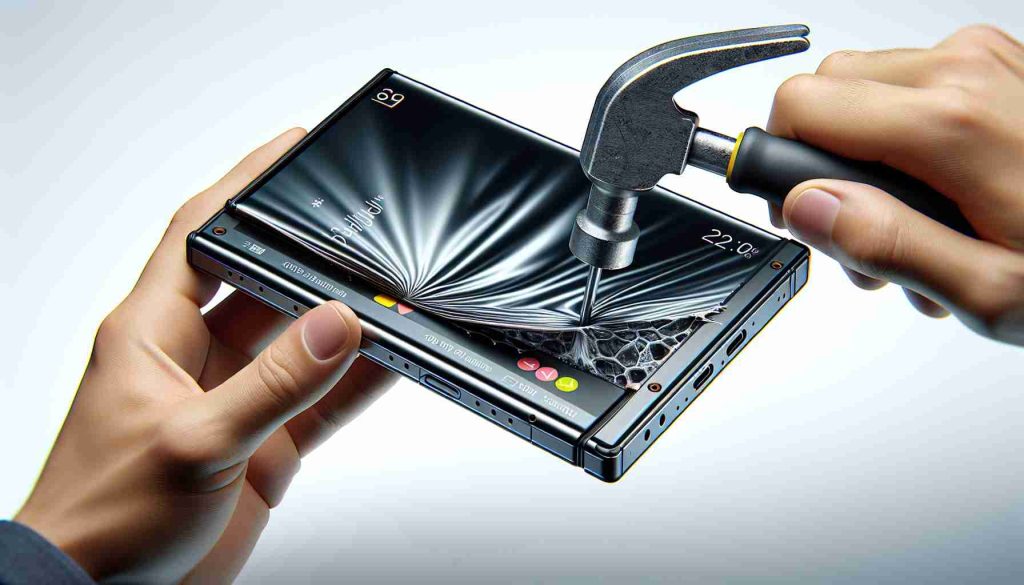Transsion Holdings, a Chinese smartphone manufacturer, has emerged as the sixth-largest seller of smartphones worldwide, trailing major players like Samsung and Apple. However, the company enjoys an impressive position in Africa, commanding nearly 50% of the continent’s smartphone market as of the fourth quarter of 2023.
As part of its growth strategy, Transsion has expanded into Latin America, where its market share has now reached 7% following a remarkable 276% increase in smartphone sales, amounting to 3.75 million units sold in the first half of 2024. Executives from local distribution firms have noted that Transsion products are especially popular among Generation Z consumers in the region.
Notably, despite its global ranking, Transsion refrains from selling its devices in North America, Western Europe, or China. With smartphones priced considerably lower than premium brands – ranging from $110 to $120 compared to the latest iPhone at $900 – Transsion’s sub-brands, including Tecno, Infinix, and Itel, provide an accessible alternative to budget-conscious consumers.
Transsion’s success lies in its ability to innovate and localize products to meet specific regional demands. For instance, its smartphones include features designed for challenging environmental conditions in Africa. However, the company has recently faced increased competition from rivals such as Xiaomi and Oppo, contributing to a slight decline in its market share to 42% in Africa during the second quarter of 2024.
Amidst these challenges, Transsion’s revenue remains robust, reflecting a 48% increase from the prior fiscal year, demonstrating the brand’s resilience in a fast-evolving market.
Transsion Holdings: Ascending Through Innovation and Localization in Global Smartphone Markets
Transsion Holdings has seen a meteoric rise in the global smartphone arena, solidifying its position as a key player particularly in Africa and increasingly in Latin America. Having established itself as the sixth-largest smartphone seller worldwide as of late 2023, the company has not only captured market share with competitive pricing but has strategically tailored its products to meet the unique demands of varied consumer bases.
What sets Transsion apart from competitors?
Transsion differentiates itself by focusing on localized innovation. The company extensively researches and develops smartphones that cater specifically to the needs of its target markets. In Africa, Transsion has deployed features such as long-lasting battery life, dual SIM capabilities, and enhanced photography tools designed for lower-light environments, responding to the preferences of consumers in markets with limited connectivity and varying power availability.
What are the current market dynamics impacting Transsion?
One of the crucial dynamics is the increasing pressure from well-established competitors like Xiaomi, Oppo, and even emerging local brands. This has prompted Transsion to prioritize a swift response to market changes, focusing on aggressive marketing strategies and local partnerships to overcome declining market share rates—falling from 50% to 42% in Africa as of mid-2024.
What challenges does Transsion face?
Despite its successes, Transsion is not without challenges. Chief among them is the rapid evolution of smartphone technology and consumer expectations. As the demand for premium features and 5G connectivity escalates, Transsion must balance its budget-focused strategy with the need for technological advancement. Furthermore, potential geopolitical tensions and trade restrictions could threaten its supply chain and market access in various regions.
What are the advantages of Transsion’s strategy?
One of the most significant advantages of Transsion’s approach is its ability to penetrate markets that larger brands often overlook. By offering affordable devices with region-specific features, the company has won over cost-sensitive consumers. Additionally, Transsion’s deep understanding of local cultures and preferences has enabled it to foster strong brand loyalty, particularly among younger consumers, who increasingly rely on smartphones for daily activities, communication, and entertainment.
However, what are the disadvantages?
On the flip side, Transsion’s focus on budget devices could limit its ability to compete in the high-end market segment. This may pose a risk as technology advances and premium brands continuously innovate. Additionally, the brand’s geographical limitations—specifically exclusion from North America and Western Europe—could stymie growth opportunities and brand visibility in those regions, creating an uphill battle against more established players who dominate those markets.
What role does consumer perception play in Transsion’s business model?
In regions like Africa and Latin America, consumer perception of reliability, brand prestige, and technological innovation significantly influences purchasing decisions. Transsion’s strategy of leveraging local ambassadors and culturally relevant marketing has proven effective in establishing its presence and appeal, enhancing the overall brand image in competitive landscapes.
Conclusion
Transsion Holdings’ ascent in the global smartphone market exemplifies how targeted innovation and localization can yield success against industry giants. While challenges abound, the company’s resilience, coupled with its understanding of consumer needs, positions it well for continued growth in emerging markets. As the smartphone industry evolves, Transsion will need to adapt its strategies continually to maintain its competitive edge.
For more information on smartphone industry dynamics, please visit Statista.























